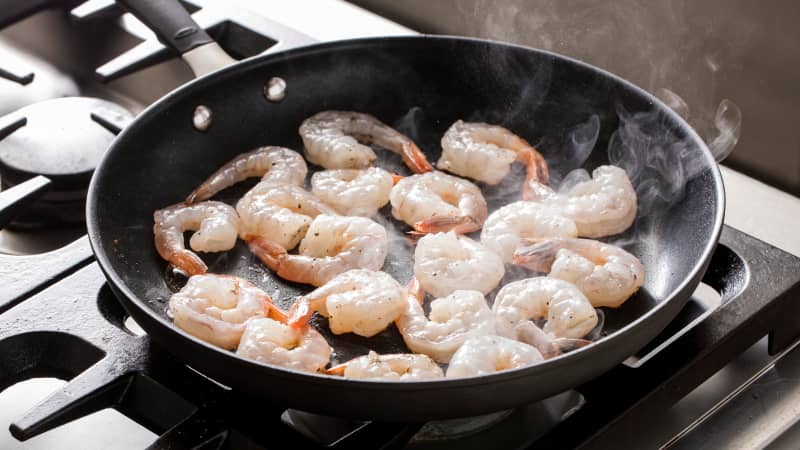Pan-seared shrimp is one of the simplest, most delicious forms of seafood—if you can manage to cook it properly.
For Nonrubbery Shrimp, Oil the Shrimp (Not the Pan)
Published Oct. 12, 2021.

It seems like an easy process, but the high heat from the pan combined with the delicate shrimp’s quick cooking time make it very difficult to achieve both a browned exterior and an interior that isn’t overcooked.
Sign up for the Notes from the Test Kitchen newsletter
Our favorite tips and recipes, enjoyed by 2 million+ subscribers!
But it doesn’t have to be that way. Cook’s Illustrated’s Andrew Janjigian developed a series of pan-seared shrimp recipes (which boast toppings such as peanuts, black pepper, and lime; black beans, ginger, and garlic; and even pistachio, cumin, and parsley). In the process, he came up with a method that employs a few unique steps.
After salting the shrimp to both remove moisture and season them, the magic begins.
Foolproof Fish
A look at the seafood counter reveals a wide variety of fish, from mild in flavor and flaky in texture to rich and meaty. In Foolproof Fish, we show you how versatile they all are by providing approachable recipes, most of which you can make with more than one kind of fish.1. Coat the shrimp in oil instead of the pan.
Instead of adding oil to your nonstick or carbon-steel skillet, toss your shrimp in oil and a pinch of sugar. The sugar encourages quicker browning on the outside. When you add oil just to the pan, your shrimp won’t all get the same amount of oil, no matter how much you swirl it. By making sure that the shrimp are coated evenly before they hit the pan, they’ll cook more consistently.
2. Start them in a cold pan.
After placing the shrimp in a single layer to ensure that they all make equal contact with the cold skillet, turn the heat to high. This may seem counterintuitive, but by allowing the shrimp to heat up gradually, the meat will cook at a slower rate. It also keeps the shrimp from buckling and cooking unevenly.
3. Cook the second side off the burner.
When it comes to cooking the second side of the shrimp, you want to use the same method that you used on the first side, just in reverse order. Once your shrimp are pink along the edges and starting to brown, flip them and take the skillet off the burner. By relying on the residual heat to cook the rest of the shrimp, the gradual reduction in heat will safely cook the shrimp while also providing necessary browning.
